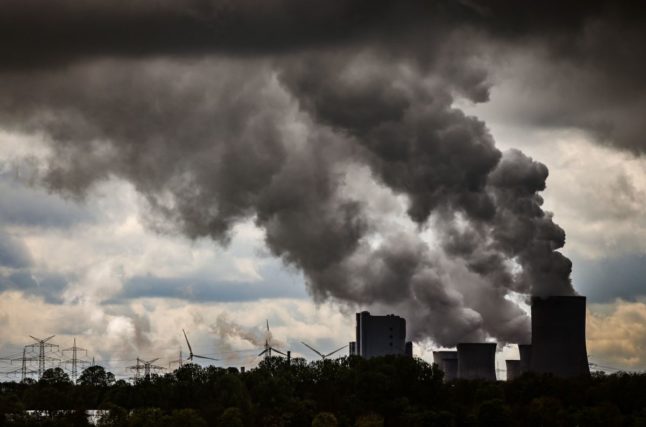The rain in the forecast might come with a chance of achy joints and fitful sleep, according to Germany’s legions of believers in “bio weather.”
Biowetter, as it’s known in German, was developed by the German Weather Service (DWD) more than two decades ago as a guide to how atmosphere conditions might affect humans. The state-run organisation publishes daily reports predicting how the weather might cause subjective, circulatory, respiratory and psychological ailments across the country.
“You can observe the changes that take place,” DWD meteorologist Angelika Grätz told The Local recently. “But what can’t be done is finding a direct factual connection for what exactly changes, because it’s all interconnected and the psyche also plays a role. The whole thing is very complex, but there is without a doubt a statistically proven connection.”
The DWD reports are printed in newspapers across the country, including even the venerable conservative daily from Germany’s financial capital of Frankfurt, the Frankfurter Allgemeine Zeitung.
But if even laced-up investment bankers are checking their weather misery rating each day, why hasn’t the rest of the world heard of bio weather?
Jörg Kachelmann, Germany’s most famous weatherman, is also one of bio weather’s biggest critics. Originally from Switzerland, he calls the concept “nonsense” that happens to have a particular resonance in the collective German psyche.
“Biowetter touches the German soul,” Kachelmann told The Local. “It’s incomprehensible for Germans to believe they could be responsible for their own headaches. That’s why Biowetter is so popular – it stands for an externalisation of responsibility. If it’s not the government then it’s the weather.”
But vice president of the International Society for Biometeorology, Dr. Andreas Matzarakis, disagrees, calling it part of the interdisciplinary science studying the relationship between atmospheric processes and living organisms.
“Biometeorology is as old as Hippocrates, who recorded how certain weather conditions made people more jittery than normal,” Matzarakis said. “In Germany the concept of Biowetter began before the war, and then developed in the 1960s when studies took a certain weather conditions and made correlations with medical diagnoses.”
Eventually the DWD institutionalised bio weather with their forecasts, Matzarakis said. According to his estimates, about 50 percent of the population is weather sensitive, while another 20 percent suffer from other illnesses and injuries that make them particularly susceptible to weather-related discomfort.
“Weather sensitivity is not a sickness, it’s something you have that can be negatively intensified when the weather changes suddenly,” he told The Local from his office at the Freiburg University Meteorological Institute. “A doctor couldn’t diagnose this, it would be difficult. But it is generally recognised that people react to the weather.”
Even bio weather critic Kachelmann doesn’t deny that people are affected by the weather, but he insists there are no studies that show all people react similarly to certain kinds of weather conditions beyond temperature and humidity.
“It’s common knowledge that when it’s humid outside one sweats more,” he said. “We also know that people with joint problems suffer more when it’s cold outside, and that’s part of the biowetter concept, but we’ve known this for hundreds of years, we don’t need biowetter reports to tell us.”
The fact that a state-funded institution like the DWD “invented” the bio weather concept has inflated the importance of human reaction to weather factors in a way that encourages hypochondria, Kachelmann said.
“It has reached an entirely other dimension, where entire illnesses are fabricated,” he told The Local, adding that if bio weather were scientifically legitimate, the DWD could have patented their forecast formula and sold it around the world.
“It’s similar to other false beliefs in Germany where people think that rivers, the moon and frogs also influence the weather,” he said dismissively.
But critics like Kachelmann won’t stop the country’s avowed Biowetter fans from consulting the DWD forecast before making plans this weekend. They might need to pack an umbrella – and a bottle of aspirin.




 Please whitelist us to continue reading.
Please whitelist us to continue reading.
Member comments